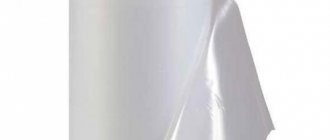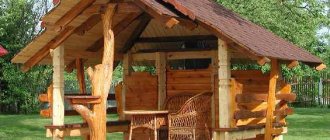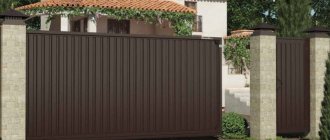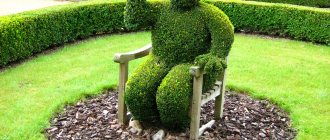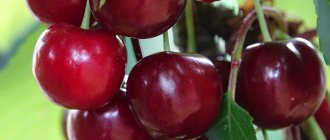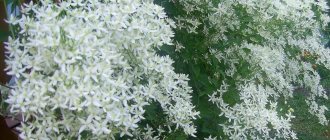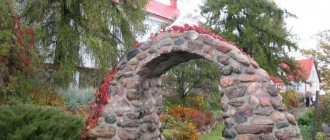Spunbond is a polypropylene geotextile. These are industrial grade landscape fabrics that are highly puncture resistant. Spunbond geotextiles have high water flow, which creates excellent dielectric constant. Polypropylene granules are melted and extruded into fine fibers, which in turn are laid and bonded to form spunbond.
The unique technology used in its manufacture ensures equal strength in both the longitudinal and transverse directions of the fabric. The fabric is made with high quality and complies with European standards and regulations.
Over the past decade, at various forums and special seminars held for gardeners and gardeners, the advantages and main nuances of using a covering material called spunbond have been very actively discussed.
Currently, a large number of summer residents have already managed to appreciate all the advantages of this material, using it on their plots. And yet, not everyone knows about the directions in which it is used.
The application technology is constantly being improved by manufacturers, who continually make changes to it. Thereby expanding the list of products and opening up new options for using the material.
The nature of the production of nonwoven material using spunbond technology is based on the direct spinning of polymer granules into continuous DPF threads (filaments). The threads are subsequently woven into non-woven materials. To produce this type of nonwoven fabric, a combination of polypropylene and polyethylene (in the form of bicomponent fiber) is practiced.
The fiber consists primarily of two polymer matrices, with each component giving the fiber its characteristic qualities. The goal is to use a softer fiber shell polymer matrix to improve performance properties, mainly feel and softness.
The fibrous casing may consist of a matrix with a lower melting point. The polymer with a lower melting and softening point in the sheath can be further used as a binder component to more easily bind the fibers with possible activation through hot air binding. Production includes three main types of spunbond.
Spunbond Polyester
Spunbond polyester fabrics generally have more uniform properties than other nonwoven structures. They are produced using medium to coarse fibers of continuous dpf yarn. Spunbond polyester fabrics are available in widths from 2mm to 500mm with basis weights ranging from 12g/m2 to 300gsm.
General characteristics:
- excellent thermal properties
- excellent quality
- very strong
- high dimensional stability
- UV resistant
- good permeability
Spunbond: types, properties, application
The non-woven material has a polymer base. Under the influence of high temperatures, polypropylene is separated into fibers, from which they are later woven into a continuous fiber. Light stabilizers provide additional strength to synthetic fiber. They provide the material with resistance to direct sunlight. The fabric does not melt at high temperatures and tolerates severe frosts and significant temperature changes equally well.
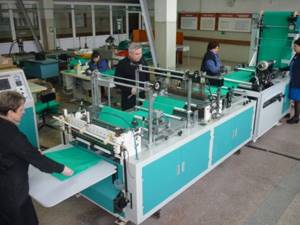
Spunbond production
The scope of application of the material depends on its technical characteristics. The main indicator of spunbond is the density of the fabric. The bulk of the material offered by manufacturers is produced in densities from 15 to 600 g/m2.
Types of spunbond
The technical characteristics of synthetic fabric are determined by its manufacturers. All types of canvas are divided into 3 main groups:
- Agrotextiles. A special feature of the material is its treatment with photostabilizers. The main application is agriculture.
- Colored spunbond. High strength fabric. Used for making household products.
- Laminated spunbond. The most durable fabric. It has good air and water resistance. Widely used for medical purposes.

White spunbond
The covering material produced by manufacturers has different colors. It serves as a guide for buyers. Each color of the canvas corresponds to a certain set of characteristics. In agricultural production, covering material is used that is colored: white, black or two-color. Other most common colors include:
- black and yellow;
- black and white;
- white-red.
White canvases transmit the sun's rays better than all other types of material. Black spunbond is used in cases where it is necessary to slow down plant growth.
Table 1. Methods of using white spunbond.
| Density of fabric, g/sq.m | Purpose |
| 17 | The canvas is used to protect plants from bad weather. The material allows moisture and sunlight to pass through well and does not interfere with the growth of young shoots. |
| 30 | The fabric is designed to protect plants from spring frosts and hail. |
| 42 | Arc-shaped greenhouses and greenhouses are covered with canvas in the spring. |
| 60 | The material is good for covering greenhouses and greenhouses in areas with harsh climates and frequent frosts. It is good for them to wrap the roots of trees and shrubs for the winter, the planting of which is planned in the spring. |
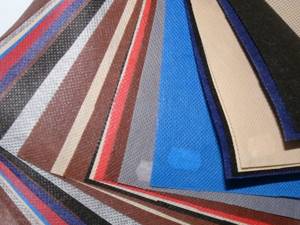
Spunbond
Table 2. Methods of using black spunbond.
| Density of fabric, g/sq.m. | Purpose |
| 50 | The material covers the beds to quickly warm the soil, suppress weeds and isolate the fruits of low-growing plants from the soil. |
| 60 | Protects plants from severe spring frosts. |
Colored two-layer material replaces mulch. Foil fabric accelerates plant growth, and reinforced fabric covers greenhouses.
General characteristics of the material
The basic requirements for non-woven fabric are determined by GOST: 53225-2008; 50276-92; 50277-92; 52608-2006. Their actions apply to all types of geotextiles, including spunbond. Products produced according to this standard are made on the basis of fiber-forming polymers using the spunbond method. Among the main characteristics of non-woven fabric:
- electrical conductivity;
- strength;
- water permeability;
- durability;
- creep, etc.
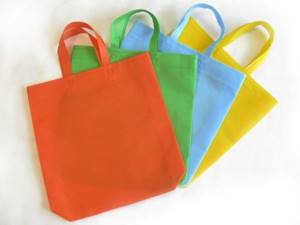
Spunbond bags
Spunbond Polyester
Polyester fabric is made using medium or coarse fibers. Most of the canvas is produced in widths from 2 to 500 mm. The base weight of polyester is from 12 to 300 g/sq.m. Polyester fabric has the characteristics inherent in spunbond.
Spunbond Polypropylene
Polypropylene fabrics are most often made from fine and medium fibers. They hold their sizes perfectly and are heat resistant. The most common sizes are available in widths up to 500 mm. Basic density from 8 to 200 g/sq.m. m.
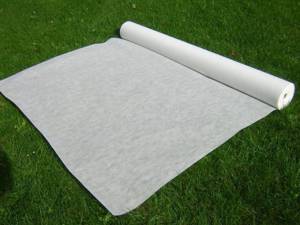
Agrotech 17
Spunbond Biko
The fabric is made using different ratios of two different fibers. Available in widths up to 500 mm. Biko's base density is from 20 to 250 g/sq.m..
Spunbond Biko
Spunbond Bico products can be made using different ratios of two different fibers: PET/PP, PET/PE, PET/PA and PET/CoPET. These products are supplied in widths ranging from 2 to 500 mm with base weights ranging from 20 to 250 g/m2.

General characteristics:
- welded
- molding
- high dimensional stability
- good fiber distribution
- good permeability
Spunbond: what is it and what is it used with?
To best understand what this mysterious spunbond is, we need to consider the technology of its creation.
It is made from molten polymer. Its thin fibers, after entering a powerful air stream, are folded into a single piece. As a result, we get a durable and wear-resistant material. Which was able to obtain a fairly wide range of uses in the agricultural field. So that spunbond can be used for a long time in direct sunlight, the material contains molten stabilizers.

The density of agrofibre, which is used in agriculture, can reach 80 g/m2. It all depends on the intended purpose of the material. The advantage of spunbond is that it can be used in both open and closed soil.
Conventionally, there are several key areas for using spunbond. This:
- Protection of the top layers of soil from drying out;
- Protection of seedlings from frost;
- Accelerating soil warming and stimulating seedling growth.
But this does not mean that the use of this covering material ends there.
Description and characteristics of Spunbond covering nonwoven material
There are different options for bonding fiber into canvas, and the characteristics of the material have ensured its stable popularity:
- Lightweight – practically weightless, does not press down covered plantings.
- Wear-resistant - does not corrode, does not rot, is not affected by fungi and microorganisms, and is resistant to chemicals and temperatures.
- Eco-friendly - does not emit harmful substances into the environment even with strong heating, safe for cultivated plants and humans.
- Permeable - conducts moisture and air well without getting wet and maintaining the microclimate underneath.
- Protective - will prevent the plantings from freezing and will not allow them to cook under hot rays.
- Multifunctional - it is used in agriculture, industry, construction, medicine, furniture production and other industries.
- Affordable - costs less than traditional covering materials.

The dimensions of the canvas depend on the specific purpose, the main indicator is its density, it ranges from 15 g/m² to 160 g/m². The thickness of the canvas depends on its density; the denser, the thicker. The width of the material is determined by the manufacturer and variety; it can be several centimeters or several meters. Covering spunbond is most often produced in rolls 1.6 meters wide, but there are also 0.8 meters and 3.2 meters. The roll length can reach 1000 linear meters.
“Abilities” of spunbond and nuances of operation depending on the time of year
The main parameters of this material are:
- High degree of strength;
- Decent resistance to temperature changes;
- Not affected by mold, rot and bacteria;
- Non-toxic and does not have any harmful effects on seedlings;
- Low weight, which does not put any pressure on young seedlings;
- Uniformity of structure;
- Excellent breathability;
- Excellent thermal insulation (its level directly depends on the degree of density);
- Excellent wear resistance;
- Light transmission (can be adjusted depending on the purpose);
- Does not react at all to chemical compounds of various types.
All described qualities may vary, depending on the variety and company of the agrofibre manufacturer.
Spunbond can be used regardless of the season.
In the spring, it is used to quickly warm up the beds and quickly sow. Meanwhile, this material protects already germinated seedlings from night frosts and serves as an excellent shelter for both seeds and shoots.
- Protects plants from attacks by rodents and birds.
- It can retain water in the soil and inhibit erosion processes due to the fact that it shelters the seedlings from strong winds.
- White spunbond, whose density ranges from 42 to 60 g/m2, is often used to create greenhouses and greenhouses. At the same time, the level of illumination remains optimal and condensation does not form. And the seedlings are reliably protected from frost and rain.
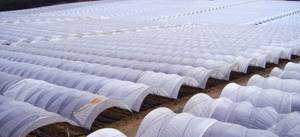
Spunbond covering material
During the summer, spunbond can become an excellent mulching material for a gardener or gardener. It will save water, prevent overheating of the roots, and inhibit the germination of weeds. Among other things, this agrofibre will be an ideal barrier for a whole list of insects that can harm seedlings. Its use for berry bushes will help to significantly reduce the incidence and subsequent development of diseases. The cause may be wet soil. First of all, this concerns gray rot.
The use of this universal agrofibre in the fall is quite capable of extending the yield of most crops. Protect from sudden frosts and temperature changes throughout the day and night. This means that it is possible to extend the growing season. Which is very relevant for the Far Eastern and Siberian regions.
In particular, in the autumn, spunbond is very actively used to prepare seedlings, which usually overwinter in open soil, for frost. If you cover perennial plants with such material in time, this will help them finally enter a period of deep hibernation. And at the same time it will become reliable protection against frost for the root system. Of course, if it doesn't snow.
In winter, this material is used by gardeners to protect seasonal crops, young seedlings of trees and shrubs, as well as ornamental plants from weather “surprises”. Among the unfavorable factors are extremely low air temperatures, complete absence of snow, excessively strong winds, and also if ice cover forms again after a thaw.
But regardless of the time of year, spunbond is very popular among gardeners and gardeners. Additionally, beds covered with this material always remain clean. This means that the development of rot on fruits is completely excluded.
Advantages of spunbond
Agrofibre is widely used in gardening, vegetable growing, and greenhouse farming. High-density fiber is used to protect plantings from various negative factors, bad weather, rodents, and weeds. Advantages of spunbond:
- despite the density, it ventilates steam well, maintains a comfortable level of heat and humidity;
- insulates heat, protects from cold air or frost, accelerates seed ripening;
- does not rot, is not susceptible to the formation of fungus, does not interest rodents, protects against beetles and weeds;
- the material is environmentally friendly, does not react with most chemicals or pesticides, and does not harm seeds and crops;
- light in weight. Despite the dimensions and increased density, the material does not create pressure on the sprouts or soil;
- allows precipitation to pass through, protects the soil from the wind, and prevents the soil from blowing out.
Spunbond agrofibre is a universal covering material used to protect seeds planted in the soil, grown plants, shrubs, and serves as the main product for arranging greenhouses and greenhouses.
Varieties of agrofibre
It is noteworthy that, depending on the need, different types of spunbond are used. Each of which has certain properties. For gardening and gardening, spunbond is produced in white, black and double colors. They all have their own degree of density.
The following colors are used as paired options:
- White-red;
- Black and white;
- Black and yellow;
- White foil, striped;
- Black foil.
White and black colors are the most popular. Because white perfectly transmits sunlight, which allows plants to grow and develop. And black is used for mulching because, unlike white, it slows down the growth of vegetation.
Types of spunbond and its purpose:
- White:
17 g/m2 – hides seedlings from bad weather, does not interfere with the growth and development of plants, and allows sunlight to pass through.
30 g/m2 – protects from the last frosts in early spring, as well as from rare hail in the summer.
42 g/m2 is an excellent material for creating greenhouses and greenhouses, it has a high degree of light transmission and provides good thermal insulation.
60 g/m2 – used to create greenhouses and hothouses in areas where the climate for agricultural crops is not the most friendly; protects from frost, snow, heavy winds; It is also used for wrapping crops for the winter season to protect buds and young shoots.
- Black:
50 g/m2 – protects from frost, ensures rapid warming of the soil and beds, inhibits the growth of weeds, and prevents contact of the crop with the ground.
60 g/m2 – a high level of protection against continued frost at the beginning of the spring season.
- Reinforced - has a high degree of strength, especially popular for creating greenhouses and greenhouses.
- Two-color - combines the qualities of a protective and mulching material.
- Foil - activates the growth process due to the reflection of ultraviolet light on the seedlings.

The choice is not limited to designated varieties and density levels. Everything depends directly on the manufacturing companies, each of which can offer the client its own variety of products.
Application of spunbond in the agricultural sector
Agrofibre is used in the agricultural sector, regardless of the time of year and climatic characteristics of the area. Due to its diverse use, the material is available in different densities, strengths and colors. The covering material spunbond used in agriculture receives extremely positive reviews.
The most durable types of white spunbond (from 30 to 60 g/m2) are used as a tight-fitting material in the construction of greenhouses and greenhouses. Spunbond reliably protects plants from hypothermia and sudden gusts of wind, while ensuring natural air circulation and the flow of atmospheric water into the soil.
Dense black material (40-60 g/m2) is used in soil mulching technology. Agrotextiles are laid out on the prepared site for future planting of seedlings, and crosswise cuts are made in the places where seeds are planted. There are special types of spunbond on the market for mulching the soil when planting tree seedlings (trunk circles made of dense agrofibre).
Less dense types of material (from 15 to 30 g/m2) are used directly to cover seedlings. A layer of spunbond is laid on the sown beds and pressed around the perimeter to prevent blowing away by the wind. Due to its lightness, the material does not disrupt the growth process of seedlings, rising as they develop.
Agrotextiles with a density of 30-40 g/m2 protect plants from frost on the ground down to -4 degrees. Thicker material with a density of 40-60 g/m2 is able to preserve plants in frosts down to -9 degrees.
In the summer season, a thin white spunbond covering material is used to shade plants and retain moisture. The material serves as a wind barrier and also protects crops from damage by insects. Denser spunbond is used as protection against contact of vegetable fruits with the soil, which helps avoid their rotting and also suppresses the growth of weeds in the beds.
In winter, heat-loving crops and winter crops are covered with agrofibre. In the absence of sufficient snow cover, spunbond reliably protects plants from freezing . It is recommended to cover some plants (such as grapes) by first sprinkling them with sawdust mixed with soil.
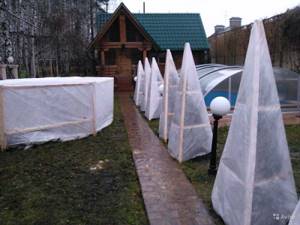
Polyethylene and spunbond: comparison
It is likely that most gardeners may have doubts about whether to switch to spunbond. The vast majority of summer residents still use plastic films to create the same greenhouses. But what will actually be more effective – polyethylene or spunbond?
Polyethylene:
- Quickly deteriorates when exposed to sunlight and as a result of temperature changes;
- It has a low level of wear resistance, even wind can easily damage it;
- Rainwater remains on the film, making it heavier. But the soil was and remains dry;
- It does not allow air to pass through, which is why there is a certain risk of condensation and, as a result, the development of mold. Which is only detrimental to escapes.
Spunbond:
- Has a long service life, there is no need to remove it at the end of the season;
- Has a high degree of resistance to external influences;
- Rainwater can penetrate the material, which means the soil will be moistened. This makes caring for the seedlings a little easier;
- Excellent air permeability. Thanks to the circulation of oxygen, condensation and mold do not form.
Based on the information provided, it is quite possible to conclude that polyethylene film, which most gardeners still use, has long been outdated and is much inferior to spunbond.
Brands worth paying attention to
In today's market there are many brands that produce agrofibre for agricultural needs. Here is a small list of leading companies that you should pay attention to when choosing a material:
- Agril, France;
- Agrin, Ukraine;
- Agrotex, Russia;
- Lutrasil, Germany;
- Plant-Protex, Poland.
Spunbond from any manufacturer is available on the domestic market. You can purchase from official representatives, managers or in agricultural stores. In online stores you can buy spunbond a little cheaper than in physical stores. Various discounts are also offered for bulk purchases.
The cost of the material depends mainly on the degree of its density. The meter of the rolls starts from approximately a hundred meters and beyond. But it’s not difficult to find rolls ten meters long.

